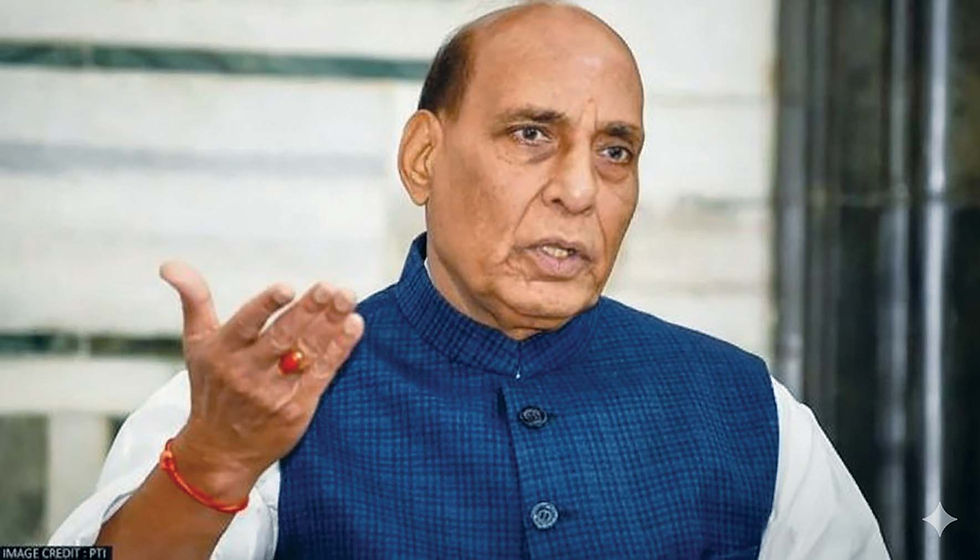US executes massive military buildup across Indian ocean and Indo-Pacific"
- Correspondent
- Apr 5
- 3 min read

As global attention remained fixated on Donald Trump’s reciprocal tariff actions and their implications, the United States made a significant military move—quietly but powerfully—in the Indian Ocean and the wider Indo-Pacific region.
The US military has now carried out its largest-ever B-2 stealth bomber deployment in this area. Satellite imagery reveals at least six B-2 bombers stationed at the US-UK joint base in Diego Garcia, located in the Indian Ocean. It’s possible even more aircraft are housed in hangars that satellites and radar can’t detect.
To put this into perspective, the US owns just 20 B-2 bombers—among the world’s most sophisticated stealth aircraft. Deploying six of them to this region means nearly 30% of its total B-2 fleet is now positioned here, marking a huge strategic shift.
Alongside this, Washington plans to bolster its aircraft carrier presence in the Indo-Pacific—expanding from one to three. Two carriers are set to operate in the Indian Ocean and one in the western Pacific, close to the South China Sea.
The Pentagon has confirmed that the USS Carl Vinson will head toward the Middle East, while the USS Harry S. Truman continues its mission in the Arabian Sea. Meanwhile, the USS Nimitz, accompanied by its carrier strike group, is en route to the South China Sea.
But the military build-up doesn’t end there. According to Pentagon spokesperson Sean Parnell, US Secretary of Defense Peter Hegseth has also “ordered the deployment of additional squadrons and other air assets to strengthen our air support and defense posture.” However, he did not go into specifics about the nature of these deployments.
What’s Behind This Major Deployment?
The Pentagon has stated this move is to reinforce America’s defensive readiness in the region. “The United States and its partners remain committed to regional security and are ready to respond to any state or non-state actor attempting to escalate conflict,” the Department of Defense noted.
The Yemen Factor and the Houthis
Though no specific countries or groups were mentioned, military analysts believe this might be a response to the escalating tensions in the Middle East and South Asia—particularly involving Iran and Yemen. In recent weeks, President Trump has stepped up attacks against the Iran-backed Houthis in Yemen, a group accused of launching strikes on US military and commercial vessels in retaliation for America’s support of Israel.
Iran and its network of regional allies—including the Houthis—have supported Hamas, the group currently at war with Israel and labeled a terrorist organization by the US.
Despite these developments, defense experts argue that the scale of America’s deployment far exceeds what’s necessary to confront just the Houthis or Iran. Two B-2 bombers alone—with a combined payload capacity of 80,000 pounds—would likely be more than enough for any mission in Yemen.
Last week, President Trump took a firm stance, warning Iran and the Houthis through a post on Truth Social:
“Stop shooting at US ships, and we will stop shooting at you. Otherwise, we have only just begun, and the real pain is yet to come, for both the Houthis and their sponsors in Iran.”
The Iran Nuclear Issue
Recently, Trump has been pressuring Tehran to renegotiate its nuclear agreement—a demand Iran has firmly rejected. In a Fox News interview, he stated, “There are two ways Iran can be handled: militarily, or you make a deal. I would prefer to make a deal, because I'm not looking to hurt Iran.”
During his first term, Trump withdrew from the 2015 nuclear accord, calling it a “bad deal,” and reinstated sanctions. Since then, Iran has significantly exceeded the nuclear limitations set by that agreement.
Now, Trump is pushing for a new, stricter deal. If Tehran refuses to engage in talks, Washington may consider targeting and destroying Iran’s nuclear research sites and weapons facilities.
Pentagon spokesperson Sean Parnell emphasized on Thursday: “The Secretary of Defence continues to make clear that, should Iran or its proxies threaten American personnel and interests in the region, the United States will take decisive action to defend our people.”
Though nuclear negotiations were not directly addressed, the message was clear.
Message to China and Russia
Experts also believe that this large-scale deployment sends a strong signal to China and Russia—both of whom are known allies of Iran.
The arrival of the USS Nimitz in the western Pacific is a pointed message to China, signaling that the US is committed to defending its strategic interests in the Indo-Pacific.
Likewise, the USS Carl Vinson’s presence in the Middle East is seen as a warning to Moscow.





Comments